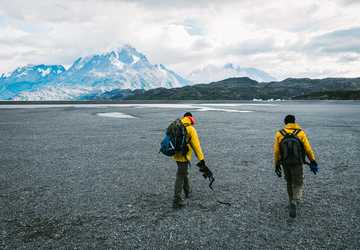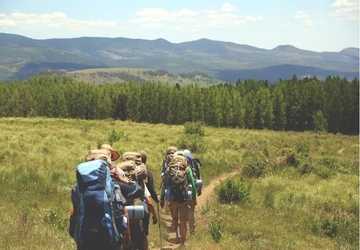If you're looking to break free from the hustle and bustle of everyday life, planning an outdoor adventure might be just what you need. There's nothing quite like experiencing the great outdoors to rejuvenate your spirit. However, to ensure a memorable experience, proper planning is crucial. This guide is here to help you understand the steps needed to plan the ultimate wilderness expedition.
The Importance of Proper Planning
Going into the wilderness without proper planning can be a risky endeavor. Being well-prepared ensures not only your safety but also a more enjoyable time. A well-thought-out wilderness trip itinerary can make a significant difference in your overall experience.

● Choose the Right Location: Before you can begin any serious planning, you must decide on your destination. Research different locations based on your interests. Some people might prefer a mountainous area, while others could be more inclined toward a dense forest or even a desert.
● Assess the Level of Difficulty: Once you have a destination in mind, assess its level of difficulty. Make sure it matches your physical capabilities. If you are new to adventure travel planning, you may want to start with an easier destination and gradually work your way up to more challenging terrains.
● Research Key Points of Interest: No wilderness trip is complete without visiting a few landmarks or natural wonders. Look up the key points of interest in your chosen location and include them in your wilderness trip itinerary.
● Plan Your Route: Map out your route with particular attention to water sources, campsites, and emergency exits. Make sure you allow enough time to reach each point of interest, as well as extra time for unforeseen delays.
● Essential Equipment: When planning an outdoor adventure, it's crucial to pack the right gear. Essentials include tents, sleeping bags, cooking equipment, and navigation tools like a map and compass.
● Safety First: First aid supplies and survival tools are not to be overlooked. A simple injury can become a significant issue if not treated promptly.
● Meal Planning: Think about your meals in advance. You'll need food that's both nutritious and easy to prepare. Meal planning is an important part of adventure travel planning.
● Stock Up: Make a list of all the supplies you'll need for your journey and purchase them well in advance. The last thing you want is to arrive at your wilderness destination only to realize you've forgotten something crucial.
If you've been accustomed to city living for a while, a rigorous outdoor trip could be a shock to the system. To make the most of your adventure travel planning, it's advisable to prepare your body for the challenges ahead. Cardiovascular exercises, strength training, and stamina-building activities should be part of your regimen several weeks before the trip.
Some wilderness adventures require specific skills like rock climbing, kayaking, or orienteering. If your wilderness trip itinerary includes such activities, consider taking a few introductory classes or workshops before setting out.
When you are planning an outdoor adventure, it's not just about what you'll do when you get there; it's also about how you'll get there. Will you drive, fly, or perhaps take a train? Your transportation choice could significantly impact your trip budget and schedule.
Many wilderness areas require permits for camping or even entry. Check out what paperwork is required and apply for it well in advance. Make sure you are also aware of any regulations or restrictions in your chosen destination to avoid any surprises or fines.
Even with the most meticulous adventure travel planning, things can go wrong. Natural events like storms or wildfires can derail your trip. It’s essential to have a Plan B, an alternative wilderness trip itinerary, in case your initial plans fall through.
Before setting out, make sure someone not going on the trip knows your plans and can alert authorities if you don’t return as scheduled. Keep a list of emergency contacts and local rescue services.
On the Trip: Things to Remember

While enjoying the wilderness, it's our duty to respect it. Always follow the Leave No Trace principles. Carry all your trash back with you, and respect the plants and wildlife. This aspect should not be overlooked when you are planning an outdoor adventure.
The wilderness is beautiful but can also be unpredictable. Always stay cautious, especially around water bodies, cliffs, or when you encounter wildlife. Your wilderness trip itinerary should be enjoyable, but safety should always be the top priority.
Understanding the Local Etiquette
In some wilderness areas, especially those near indigenous lands or small local communities, it's important to be aware of local customs and traditions. When planning an outdoor adventure, do some research or consult with local guides to understand what is considered respectful behavior in the area you will be visiting.
Engaging with Local Communities
If your wilderness trip itinerary takes you through local villages or settlements, consider taking some time to engage with the community. They can offer valuable insights about hidden gems or lesser-known trails, enriching your overall experience. This could be an overlooked aspect but a valuable addition to your adventure travel planning.
By giving thought to local customs and engaging with communities, you can make your adventure more enriching and respectful. Whether it's following traditional practices for land conservation or understanding how to interact with native wildlife, these small acts can make a big difference in your wilderness experience.
So there you have it—a comprehensive guide to planning the ultimate wilderness adventure. Remember, planning an outdoor adventure takes time and attention to detail. A well-crafted wilderness trip itinerary and sound adventure travel planning will ensure you have the time of your life while staying safe and making the most of what Mother Nature has to offer.